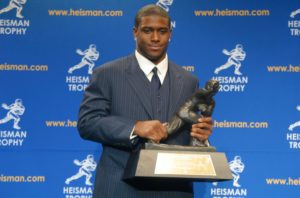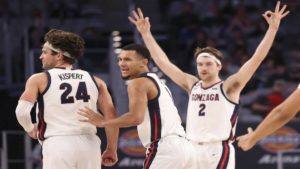
College Athletes vs NCAA – Amateurism is on trial again! On Tuesday, September 4, the trial for what has become known as Alston v. NCAA commenced in federal district court in Oakland, California. Judge Claudia Wilken is presiding. She also presided over the O’Bannon case in which the NCAA lost. Per O’Bannon, the NCAA can not use the images of its former student-athletes for commercial purposes after graduation without compensation. Alston could completely change the landscape of the billion dollar industry of college athletics, which is comprised of television and sponsorship deals.
The NCAA and the Football Bowl Subdivision (FBS) conferences are faced with defending their beloved principle of amateurism. The plaintiffs’ claim that the rules capping scholarships at grants-in-aid and cost-of-attendance violate federal antitrust laws. The O’Bannon case already determined that the NCAA is subject to federal antitrust laws. So, the NCAA is required to defend against related claims.
College Athletes’ Argument
The plaintiffs are at the cusp of destroying the charade of amateurism by seeking to remove the NCAA’s scholarship cap. The cap prevents “student-athletes” from receiving scholarship money above the cost-of-attendance. A cost-of-attendance scholarship provides student-athletes with an opportunity to get an education without paying. However, it is often not enough to cover many of the athletes’ general living expenses such as food and clothing.
NCAA’s Argument
The NCAA argues that the rules capping scholarships do not violate federal antitrust laws because they are essential to protecting amateurism. They state that the rules are necessary to help “student-athletes” fully integrate themselves into the campus community. They also argue that eliminating amateurism rules will damage college athletics.
The NCAA contends that if student-athletes are allowed more than a cost-of-attendance scholarship, they will cease to be “amateurs” and fans will lose interest. They also state that the scholarship cap helps student-athletes integrate into campus communities. However, the NCAA’s integration argument provides no evidence that the presence of a scholarship cap helps student-athletes. “Integration” is more likely affected by the major time commitment that each sport requires coupled with the time mandated for actual coursework. It is highly unlikely that a scholarship cap does anything to alleviate the time management burden each “student-athlete” is faced with in balancing their sport with academics.
Given the flaws in the NCAA’s arguments, it appears that the plaintiffs may have a viable shot at having the cap removed. The plaintiffs counter this argument by noting that the individual conferences will have the choice to adopt their own individual policies regarding compensation caps. They also argue that college athletics will benefit from changes to amateurism.
The Outcome Could Change College Athletics
The outcome of this case could completely change the future of college athletics. If the plaintiffs are successful, the world of college recruiting would completely change. The college recruitment market would essentially be open for conferences and colleges to make their own decisions on how much scholarship money to award student-athletes.
This type of open market would provide the freedom for student-athletes to receive more of the value that they provide to the colleges they attend. Although many student-athletes receive a cost-of-attendance scholarship that provides them with the opportunity to get a “free” education, colleges make millions off the backs of student-athletes each year. Most of the money is dispersed to coaches, staff, and is used to build lavish athletic facilities. The current structure is simply not fair to the student-athletes, and as such, they have a lot to gain from the outcome of this case. If the Plaintiffs are successful, “student-athletes” will be in a better position because they will receive more of the value that they bring to their respective schools.







No comment yet, add your voice below!